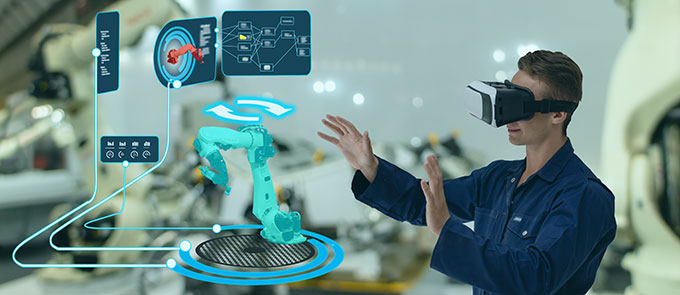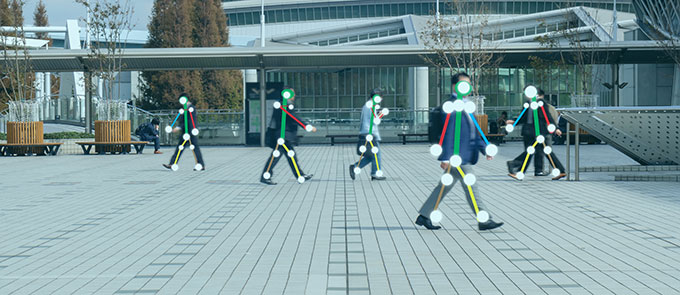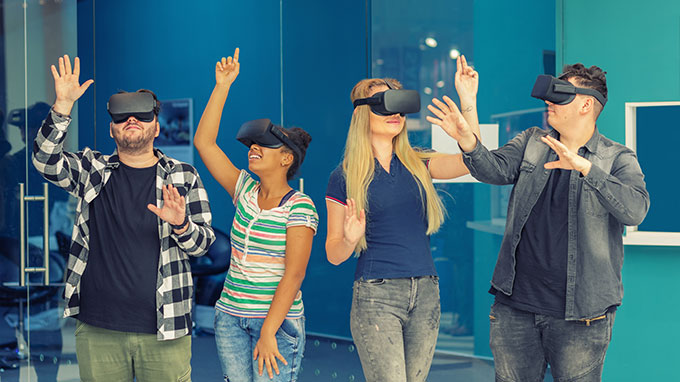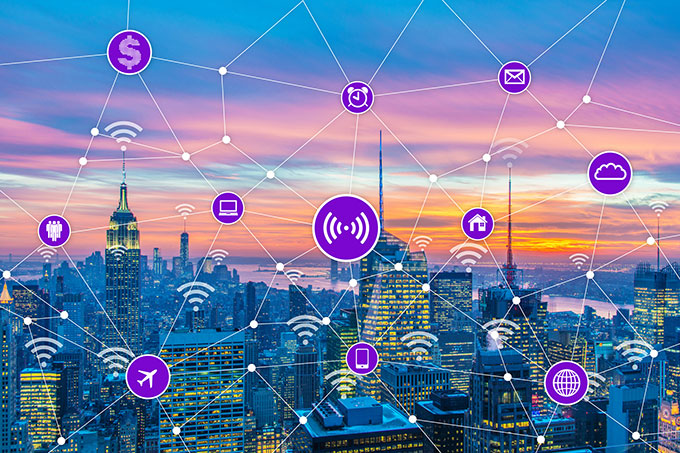5 Technology Disruption Brought to the Construction Industry
The advent of computers and modeling software unequivocally changed the construction, architecture, and design industries like never before. Where previously architects would use hand tools to draw, and mockup building, the new age of computerization meant that Building Information Modeling (BIM) systems were the new normal. Talented engineers and designers could quickly and easily manipulate architectural and construction plans via BIM, new plans could be created or edited faster than ever before, and the field was never the same.
Today, a new sort of BIM disruption is being undertaken thanks to the next generation of digital technologies. No longer are basic computers and software tools leading the cutting edge of innovation, but instead, futuristic and exciting technologies like augmented reality (AR), virtual reality (VR), and artificial intelligence (AI) are what’s breaking the mold these days. These types of digital technologies are poised to disrupt the construction industry, and in some cases, they are already causing that construction technology disruption. Read on to see the ways that these new construction technological tools are really changing the industry.
Augmented Reality (AR)
As the global market of augmented reality is growing and is expected to reach 90 billion dollars by 2020, the construction industry has also started seeing ample implementation. AR is defined as a type of technology that is able to superimpose computer-generated images onto an in-person view of the world. For example, if you hold up a phone or tablet that was showing the road in front of you but had superimposed over it a map and the direction you needed to be walking, that would be an example of augmented reality.
In the world of construction, augmented reality is allowing designers to get a better look at their plans in the real world than ever before. For example, by using a similar table augmented reality technology, BIM software and other engineering design tools are able to show a view of a proposed design and how it would look on an existing space. That could be showing what a newly built room divider would look like while standing in that room, visualizing the placement of an appliance or piece of furniture within a room, or even given a 3D walkthrough view of what it feels like to walk through a room before there’s even a building in that spot.

Artificial Intelligence (AI)
Artificial intelligence, or AI, has been gradually taking more of a prominent role in all fields that deal with designs, computers, and planning. Essentially, artificial intelligence is the ability of a computer or computer system to learn how to perform a task that would normally require a human and do so on a more automated and quick fashion thanks to its programming. AI can take all sorts of forms, but within the construction industry, it is completing many critical tasks that can reduce costs and lengths of time needed to complete projects.
For example, the detailed and intricate planning of plumbing and electrical systems within a broader building design used to be a task that required highly trained professionals and many, many hours of his or her time. However, as computer scientists and architects have worked together to train AI programs on what requirements must be met for a safe and reliable operation of these systems, computers can fill in and complete these jobs more quickly and affordably than their human counterparts. Simply by placing the building design in a BIM tool or other software, AI can then fill in the blanks about how and where the plumbing and electrical systems should come into play.

Virtual Reality (VR)
Virtual reality, sometimes called VR, is similar to augmented reality, but the main difference is that the person using the VR will feel like they are entirely in the computer-generated 3D world rather than having 3D components transmitted in front of the real-world view. Virtual reality has been around in the world of video games and novelties for a while, but combining them with BIM means that the construction world can truly be disrupted thanks to virtual reality.
Specifically, virtual reality is being used to make the planning and design process much more real for clients and those in the construction industry without ever having to leave the office. The 3D models that engineers create in programs like Revit and Autodesk can be easily ported over to a virtual reality program. That means anyone who is involved with the building can then put on a pair of VR goggles and feel like they are placed inside that 3D model, allowing them to walk through, look around 360 degrees, and get a better sense for what the building will look like. This virtual reality capability means you no longer have to imagine what a building will look like before construction; you can literally feel it!

3D Printing
An area of technological advancement that has made many different sectors feel like we’re already living in the future is 3D printing. The advent of affordable and relatively small 3D printers has meant that people could take their modeling software and create actual products, prototypes, and parts that they could hold in their hand without creating a whole manufacturing or production process. The limits of 3D printing are only a factor of your imagination, so 3D printing has indeed turned many different sectors upside down.
Specific to construction, the obvious application is the ability to print pieces, parts, or even entire buildings. 3D printers use additive manufacturing and can sequentially layer material on top of itself until the desired shape is created. 3D printing in construction is a natural step to take, as well, because BIM and other software already are used to design and plan buildings, so it’s only logical to go further and deploy those 3D models into 3D printers. Using 3D printing to create steel nodes, to spray deliberate and planned cement, or other parts and components of a building make the final product more affordable, quick to produce, and exact in dimension.

Internet of Things (IoT)
One of the quickest areas of digitization across various industries is the advent of the Internet of Things (IoT). The Internet of Things is the term given to interconnected and communicating devices, such as smart meters, sensors, digital processing machines, and more. Instead of being isolated, machines and computers attached to the Internet of Things can communicate with each other and interact with each other in a comprehensive way that makes their final function even greater than the sum of their parts.
In construction, IoT technologies that are making a splash include namely construction equipment. By opening up the ability of construction machines to talk to other machines on site, time and money will never have to be lost when machines are low on necessary fluids, close to overheating or breaking down, or need some preemptive maintenance. In this way, the amount of downtime on the equipment and associated delays in turning construction designs into actual construction will be minimized.

Preparing for Construction Technology Disruption
Oftentimes when these new types of technologies get released into various sectors, the early adopters are the ones that get to reap the greatest rewards and gain a competitive advantage. Companies that resist new technologies because they are new or unfamiliar end up falling behind and have an institutional disadvantage. So, as these digital technologies really being to disrupt the construction industry, don’t be left behind. Here are some quick tips for how to prepare for such technology disruptions:
- Stay Trained Some organizations will resist these new technologies because they don’t know how to adapt them, and that means they are inherently intimidating. One way to prevent this archaic way of thinking is by staying trained on the technologies and always constantly learning.
- Investigate and Invest in New Technologies These types of technologies are often rolled out at industry trade events, so be sure to read about them and talk to your peers about them so you can investigate what they’re doing and how they can help you. Then when you think you see how they’ll be able to help you, don’t shy away from investing in them.
- Have Tech-Focused People in Your Team You don’t want to be the laggard in the industry just because you are not tech-focused. As you get new employees and build your team, be sure that you round out your organization with people who are fluent in technology and are interesting in building these capabilities. You want people on our side who will help you with these tech advancements, whether that’s your own employees, outsourced teams you work with frequently, or even clients.
- Recognize the Value in Early Investment It may be tempting to wait until the rest of your peers invest in the technology before you yourself get involved, but by being a leader you can gain more value, advantage, and end results. So, recognize how important it could be to invest early.
Partner with the Experts to Prepare and Make the Best Out of New Technologies
If you’re excited by the possibilities offered by AR, IoT, and other digital technologies, you’ll want to get started as soon as you can. If you don’t know where to start, know that the IndiaCADworks (ICW) engineering team has the experience and skillset in all these new-age construction technologies. As a leading engineering and BIM services provider, we have the experts constantly learning and applying these disruptive BIM technologies for our clients, so we have unparalleled capability to understand, adapt, and use technologies to support architects, contractors, and construction firms. If you want to learn more about how we can help you achieve these technologically advanced goals, get in touch with us today!
– IndiaCADworks











